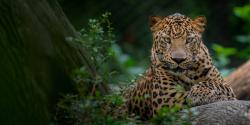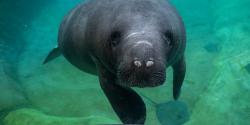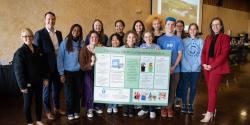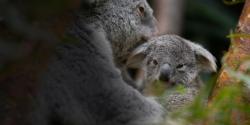By Harvey Castner, Columbus Zoo and Aquarium Volunteer and Pollinator Enthusiast
and Stoyan Iordanov, Horticulture Manager
While visiting the Columbus Zoo and Aquarium, Zoombezi Bay, or Safari Golf Club, you may have noticed large areas around the parking lots and entrances where the grass has been removed and the ground tilled.
So, what’s going on? You’re watching sustainability and conservation in bloom!

The Zoo is making a significant contribution to reestablishing native prairie growth with perennial plants that produce pollinator-friendly habitat containing nectar and pollen for honey bees and wild pollinators, including hummingbirds and the monarch butterfly.
The Zoo’s pollinator habitat project began in 2021 in partnership with the Bee & Butterfly Habitat Fund. Seed planted in an initial test plot within the Zoo’s Polar Frontier region has since bloomed.

The project has expanded to include a partnership with the USFWS - Partners for Fish and Wildlife Program (Service), who also provided seed and helped till many of the areas on the mounds around the parking lots and along Powell Road that were planted this winter and are growing well. Seed from both the Service and the Bee & Butterfly Habitat Fund have been planted and will produce almost 10 acres of new prairie at the Zoo and just under 1 acre at the entrance of Safari Golf Club located across the road. These join three pollinator habitats at the zoo's waterpark - the largest in Ohio - Zoombezi Bay.
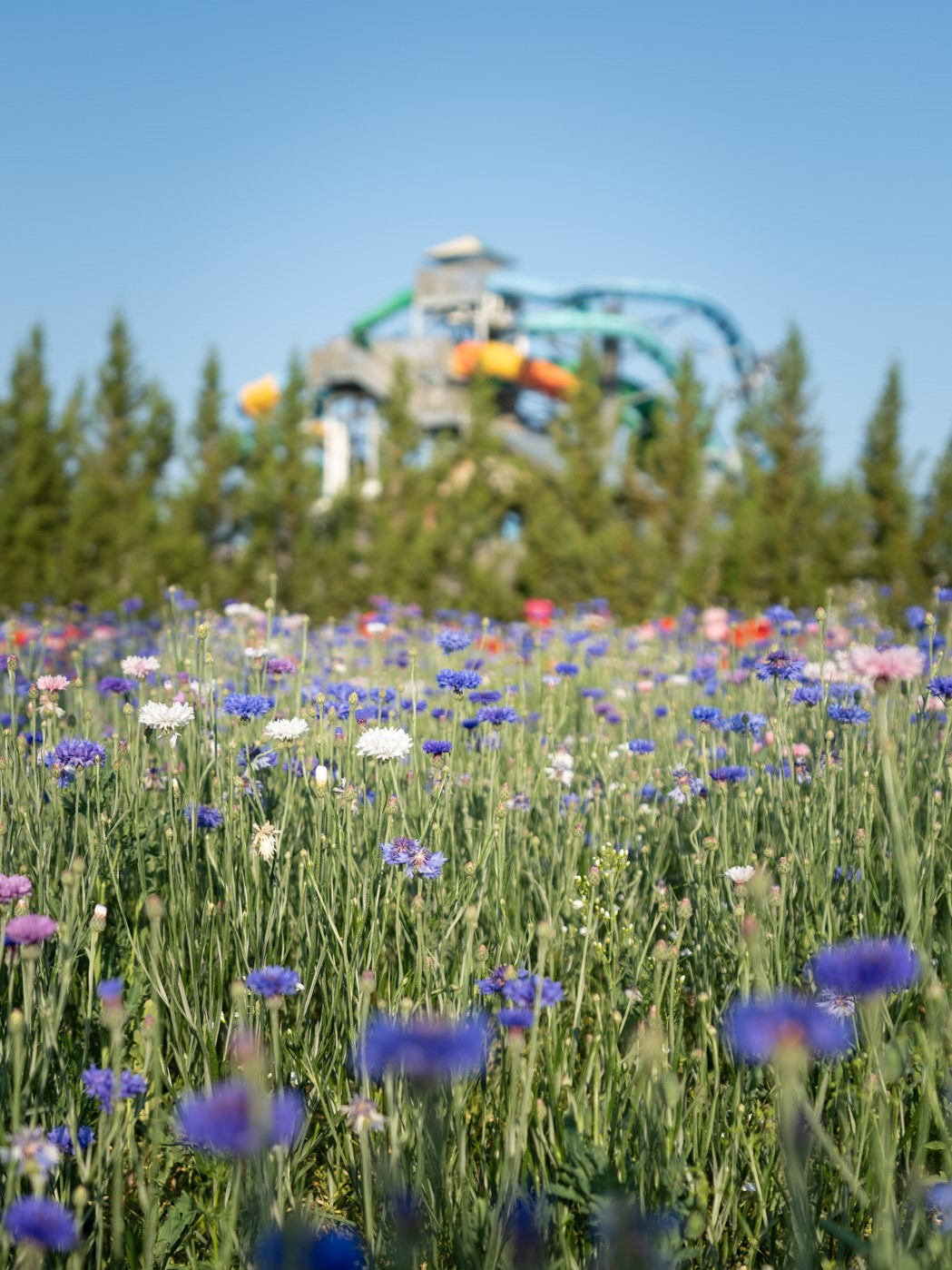
Each pollinator site is planted with as many as 40 different grass and wildflower varieties that are native to Ohio and the surrounding states, including wild rye grasses, sedges, milkweeds, Joe Pye weed, black-eyed Susan, coneflowers, goldenrod, asters, and many more.
The seeding plan will result in different heights and bloom times to attract animals throughout the season. As they prosper over time, it may take several years to fully develop the areas, and they will change slightly from year to year. The Zoo’s Horticulture Department also seeded annual wildflowers at the edges of each area to provide color throughout the summer. The annual seeds were included in the seed mix from the Service to promote flower color even in the first growing season.
During Earth Day celebrations at the Zoo, children planted seeds from native plants, alongside The Ohio State University Extension Master Gardener Volunteer Program, that will be transferred to one of the plots once they develop roots.
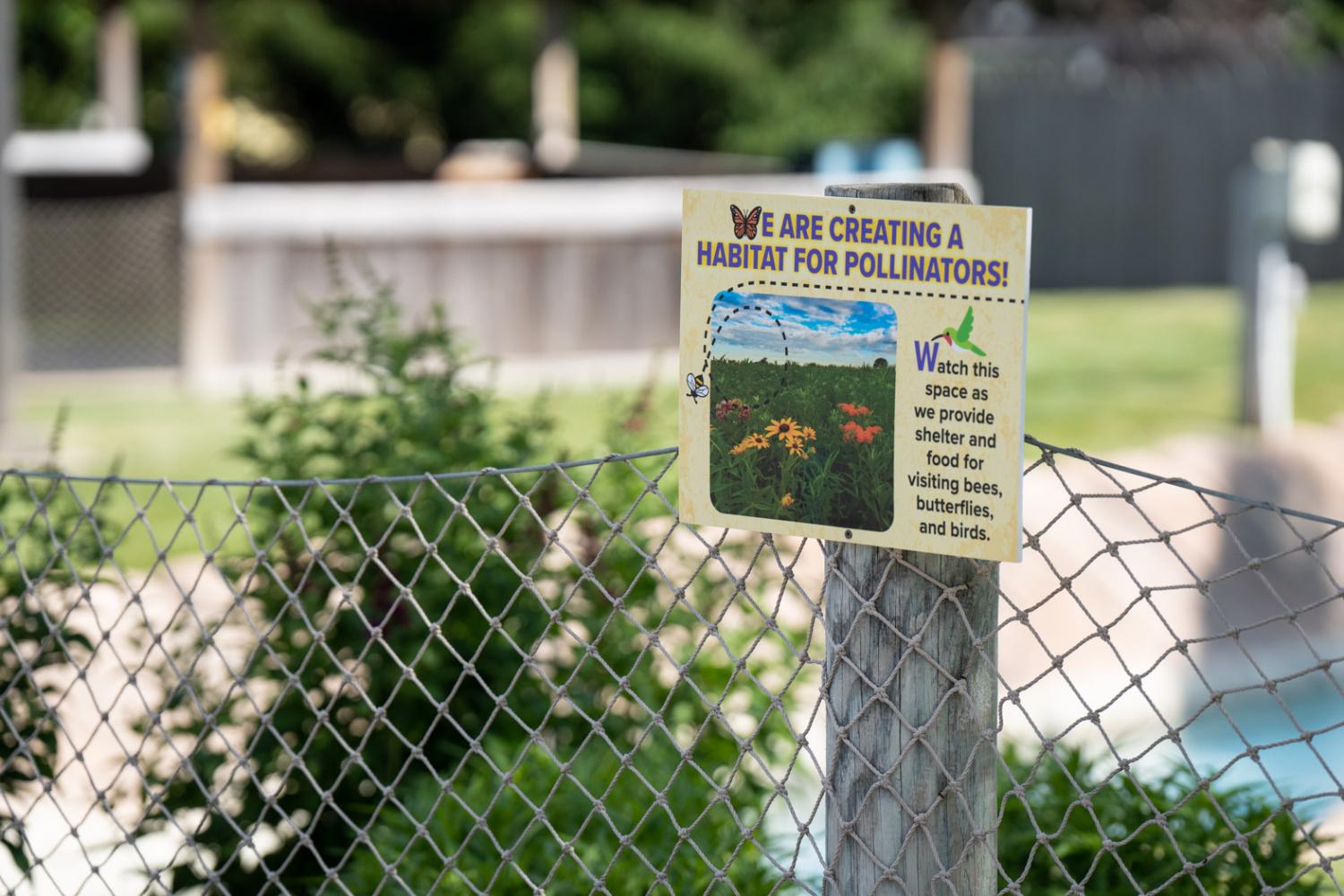
Butterfly gardens have been promoted for more than 30 years to help revive the declining population of monarch butterflies. Additionally, the focus on the decline of bee populations, particularly honey bees, has come into focus recently. Today, the terms “butterfly garden” and “pollinator garden” are synonymous as they both contain native plants that will attract and support species that rely on nectar and pollen. The Zoo has even hosted a butterfly garden next to the Manatee Coast building for many years! This area was planted with other native shrubs and perennials to promote longer blooming time and add more diverse plants species.
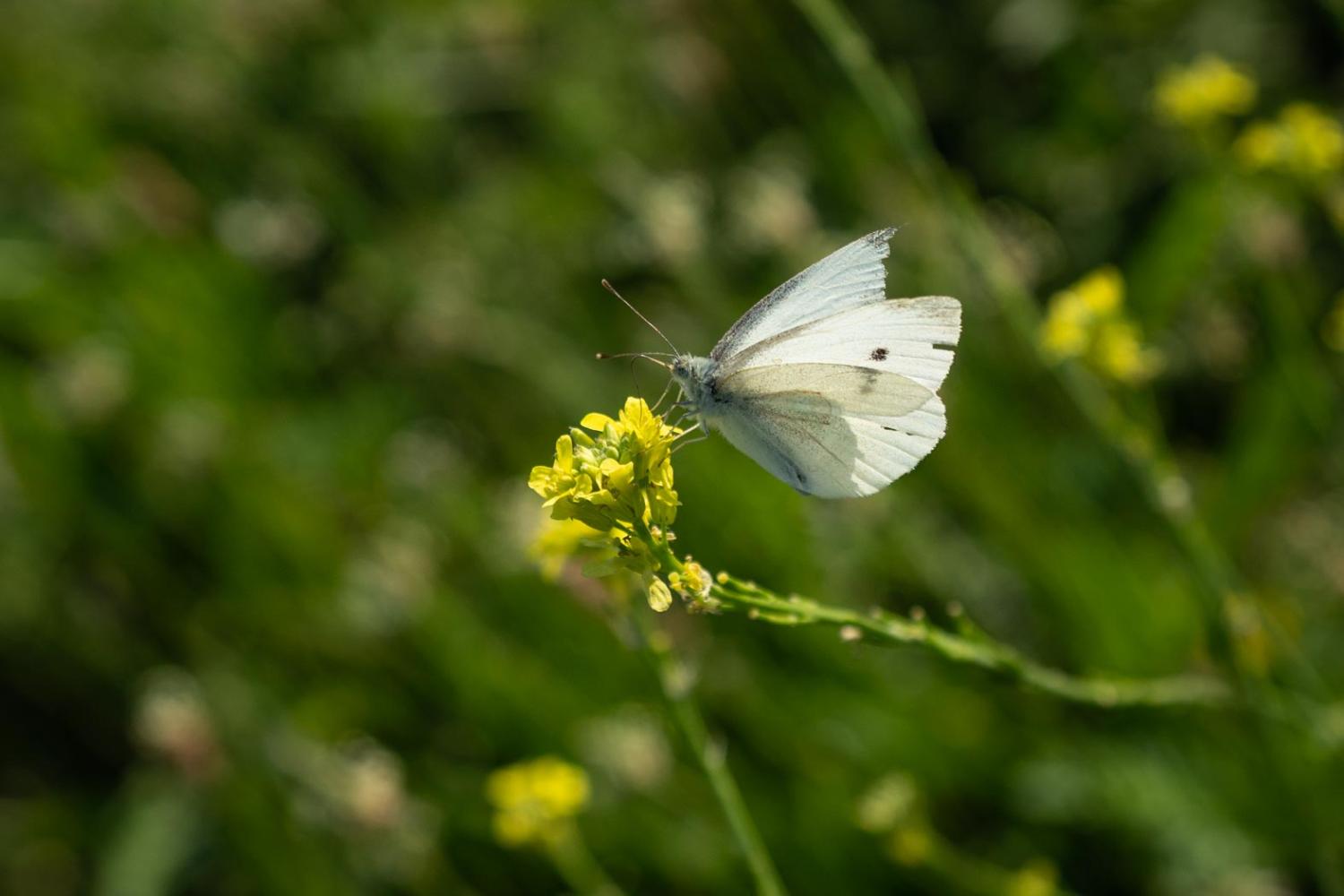
A 2015 White House report on the health of honey bees and other pollinators estimates that one-third of our food crops require help from animal pollinators, including fruits like apples, blueberries and cherries; vegetables like squash, melons, and tomatoes; almonds and other nuts; and crops such as alfalfa and soybeans. These pollinators are also needed for 90 percent of flowering plants. The report further states that habitat loss, disease, and use of pesticides is responsible for the decline in the populations of bees, butterflies, birds, and other pollinators that include moths, beetles, bats, and flies. The Task Group also identified goals to reduce honey bee losses, increase the population of monarch butterflies, and restore pollinator habitat.
The Zoo’s pollinator garden initiative supports the vision of sustainable co-existence of all living things, as well as the goals of the National Pollinator Task Force. These goals are supported at the federal government level by congressional funding and efforts by the U.S. Environmental Protection Agency, U.S. Fish and Wildlife Service, and U.S. Department of Agriculture. The Ohio Department of Natural Resources (ODNR) and organizations such as the Pollinator Partnership also support the expansion of pollinator habitat.
How Can You Help?
Individuals are encouraged to support the health of pollinators by planting their own pollinator gardens. Information on the species to plant and how-to guidelines can be obtained from the listed references. One Option of Many: Use the Bee and Butterfly Habitat Fund’s Pollinator Habitat Establishment and Management Guide to get started!
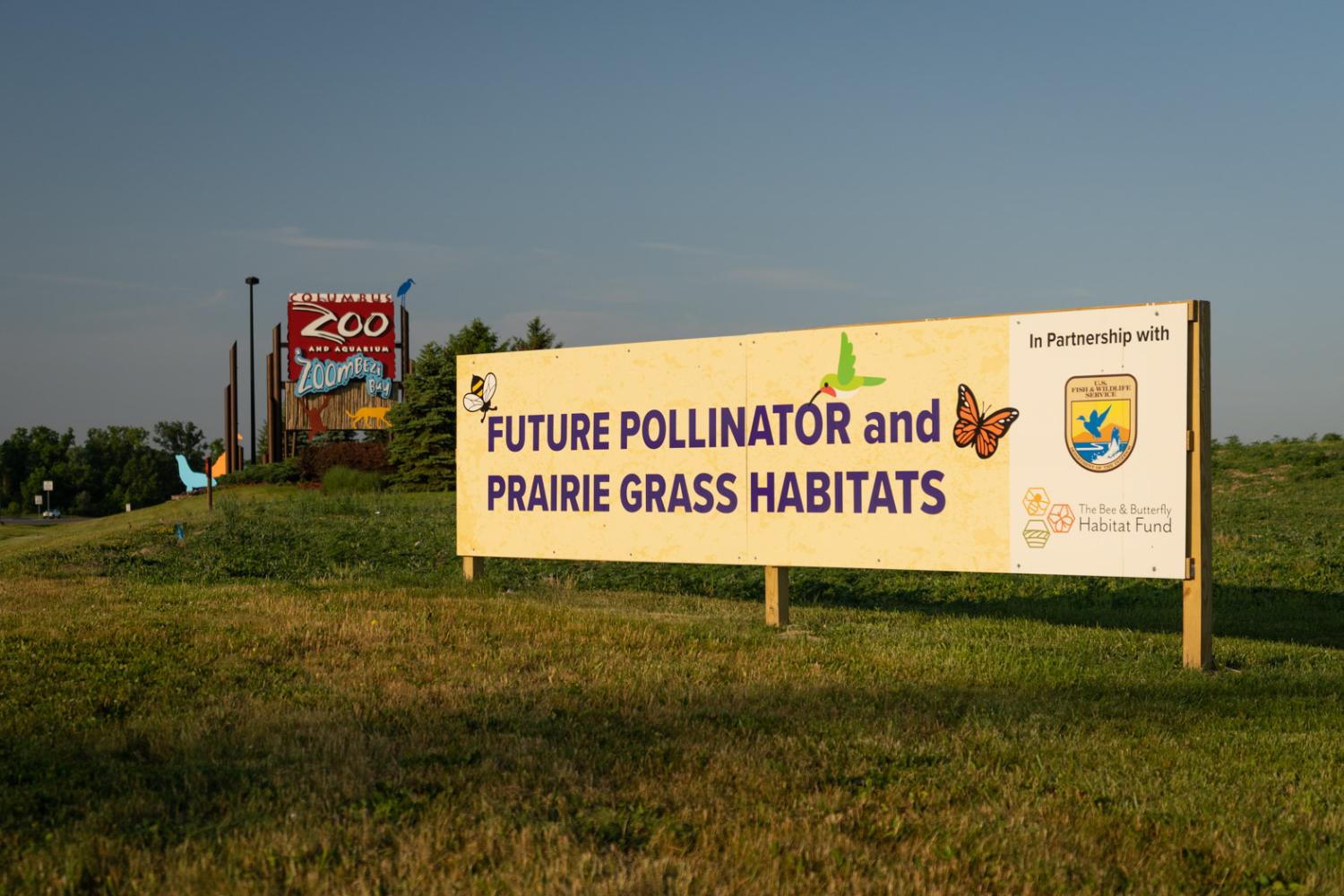
Learn More about Sustainability efforts at the Columbus Zoo Learn More about Ecology Efforts at The Wilds
Learn More About Conservation Efforts at Safari Golf Learn more about conservation efforts at Zoombezi Bay
References
- Bee and Butterfly Habitat Fund, https://www.beeandbutterflyfund.org/habitat-guide.html
- Pollinator Health Task Force entitled: National Strategy to Promote the Health of Honey Bees and Other Pollinators, https://obamawhitehouse.archives.gov/sites/default/files/microsites/ostp/Pollinator%20Health%20Strategy%202015.pdf
- US Fish and Wildlife Service, https://www.fws.gov/initiative/pollinators/how-fws-helps
- US Department of Agriculture, https://agr.wa.gov/pollinators
- US EPA pollinator efforts, www.epa.gov/greeningepa/pollinator-protection-epa
- Pollinator Partnership Regional Planting Guides, www.pollinator.org/guides
- Ohio Department of Natural Resources, https://ohiodnr.gov/discover-and-learn/education-training/wild-ohio-harvest-video-library/outdoor-skills-and-activities/create-a-pollinator-plot



